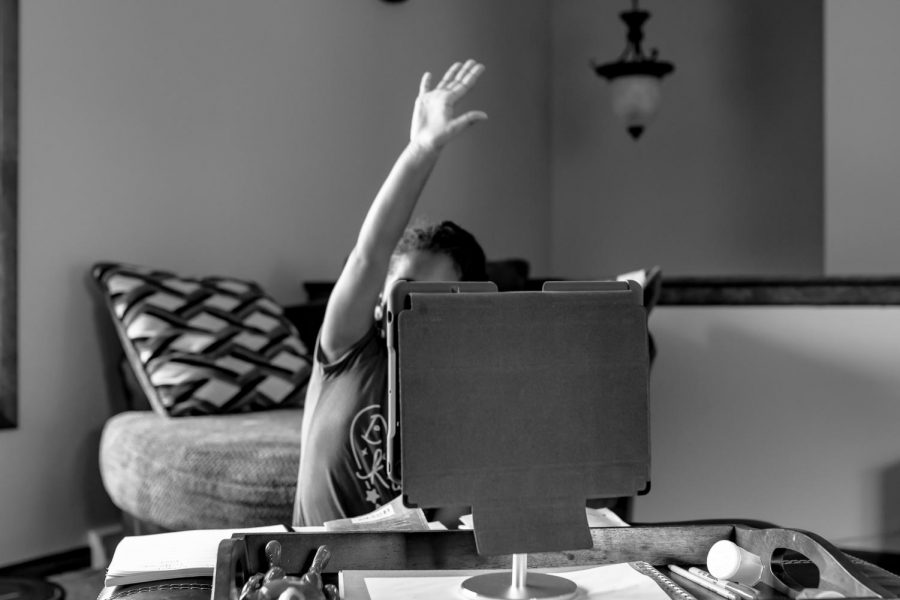Funding drives decision to open schools
Students retain option to go virtual in some districts
More stories from Akshaj Mehta
Natomas Unified School District is resuming full-time in-person instruction after more than a year of online learning. A key motivation for the change: Funding. One big reason for the change: Funding.
For the 2020-2021 school year, the California state legislature passed a law that allowed schools to get funding for distance learning, rather than basing funding on in-person attendance as was standard pre-pandemic. That legislation has expired, and the state is now funding schools based on daily in person attendance.
“Last year, (the legislature) passed a bill saying that as long as we are offering syncnorhous time to students and hitting all these requirements and keeping notes and things on what we’re doing, then we can get attendance for having you study at home,” said Laura Bariel, the teaching and learning director at Natomas Charter School in Sacramento. “They only passed it for that year. This year we can no longer do that.”
“As of right now, because the legislation expired, there’s not an option for distance learning for a full schedule,” Bariel said. “We are having students quarantine for a full 10 days. And those students would do short-term independent studies. They would be meeting a teacher one time a week for high school and daily for elementary,”
For those students who don’t feel comfortable returning to campus, Bariel explained that an online system is already in place in the Natomas Unified School District.
“There is a virtual academy blended (with) virtual learning,” Bariel said. “High school is college preparatory and focuses on dual enrollment with (American River College), where we had probably 60-70 percent of students last year taking a college class while enrolled in high school classes. The virtual academy is a good fit for students who like to work on their own, or if they have art or sports or work.”
Teachers and administrators have also learned so much about their teaching style and having the time to reflect on coming back to campus last year. It was an opportunity to see what they could change for the better for students.
“Last year was a moment in time where we had to take a look at what we are teaching and why,” Bariel said. “That was a great pause point. Many schools across the nation know what the power standards are, the key skills and processes we want students to learn – from looking at different technologies, how we format a class, how we assign homework, the activities we ask the students to do.”
While in-person learning has a greater risk for the spread of COVID-19, teachers and students say they welcome coming back to campus, and enjoy it thus far.
High school senior Janelle Calma returned to campus on Aug. 1. She enjoys it, but she still understands the fear of the entire situation.
“I like it, especially being a senior. But obviously it’s still scary, especially when we do have positive cases,” Calma said.
Her favorite part is being on campus after almost a full year of online learning and participating in activities. “Just the environment at school, because of distance learning, I felt like being on the computer was just so tiring,” Calma said. “Now I can fully participate in student gov, and we already started doing more in person things. We have a club rush tomorrow. And (we are doing) clubs in person. Now we’re doing mock trial in person,”
TJ Fassler, a fourth-grade elementary school teacher, had the experience of being exclusively online, unlike schools that opened using the hybrid model. He has not changed his curriculum this year for academics but is focusing on it differently.
“We have our same math and reading curriculum that has been adapted,” Fassler said. “The biggest difference has been instead of trying to make sure we touch on everything, when instructional minutes are decreased, we went deeper on things very specific on building blocks for next year.”
Fassler said he thinks having students on campus provides a different energy, and he is enjoying it.
“Students being on campus have a different energy,” Fassler said. “One of the big things (is) I can see not only my students, I can see my (previous fourth graders) and say, ‘Hey, how are you doing?’ I love the community aspect. Having them in a classroom is really nice and much easier to check-in as opposed to online.
Your donation will support SacSchoolBeat student journalists and will allow us to work with more student journalists to cover education on campuses and in school districts in the Sacramento region. A timely mini-grant from the Sacramento Press Club has allowed us to conduct our summer training and continue the program at least through the end of the fall semester.


